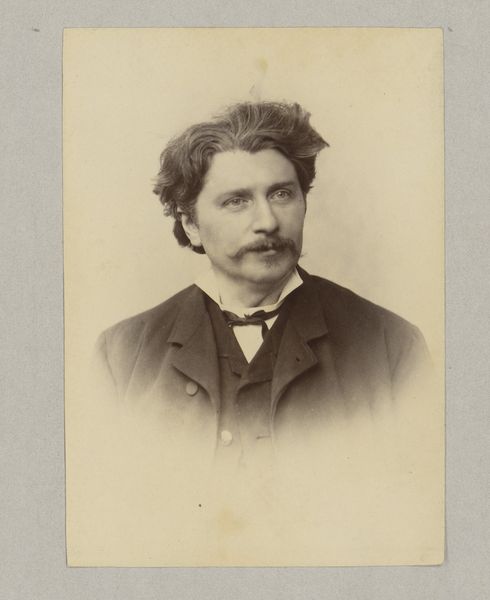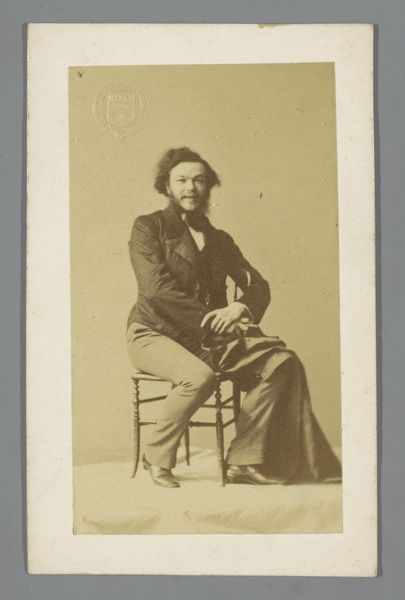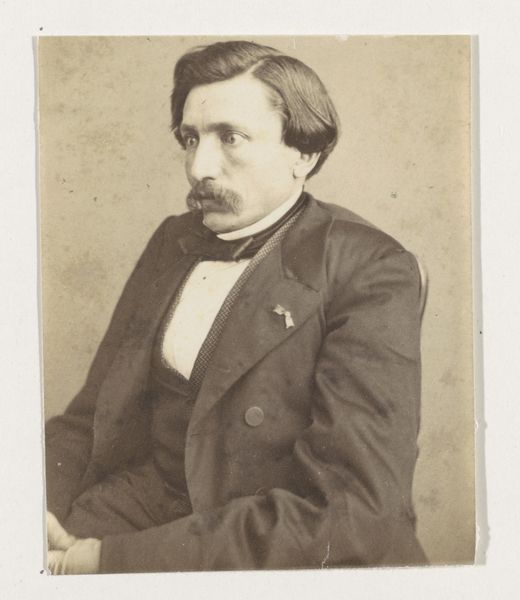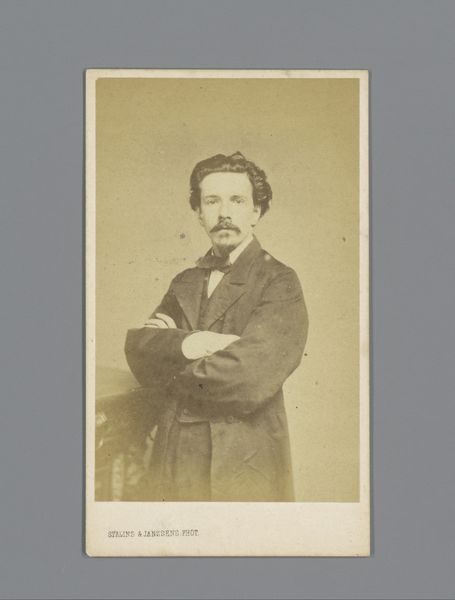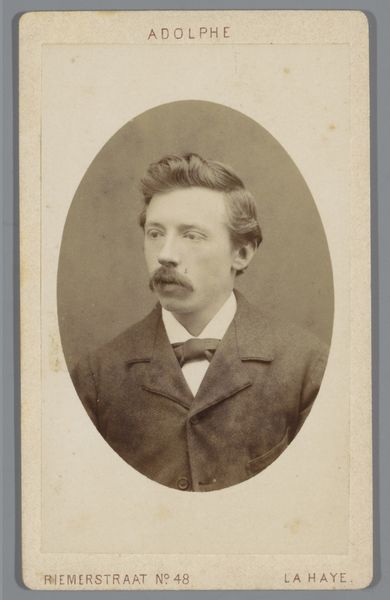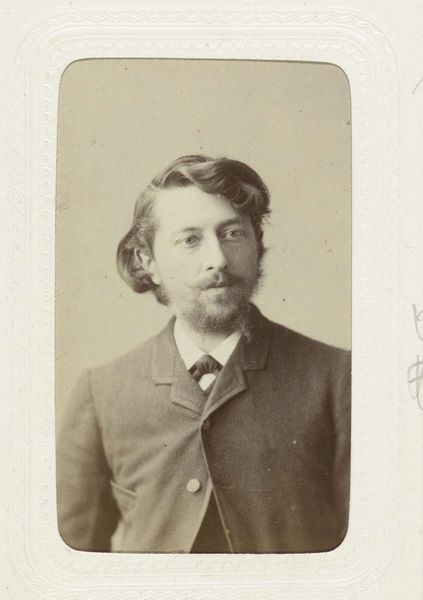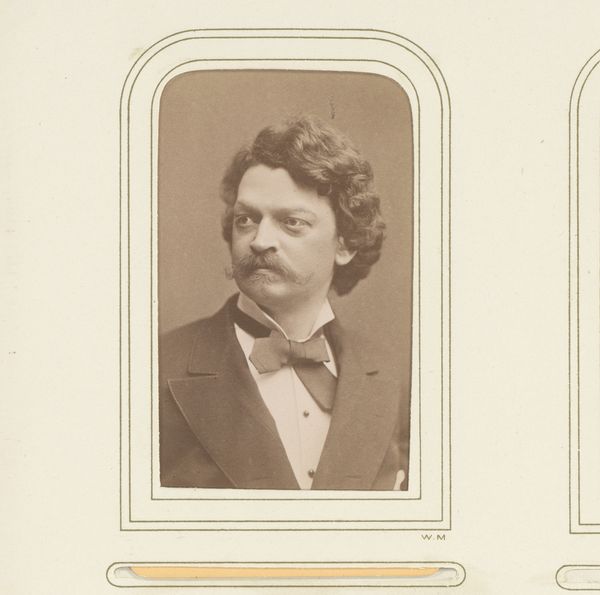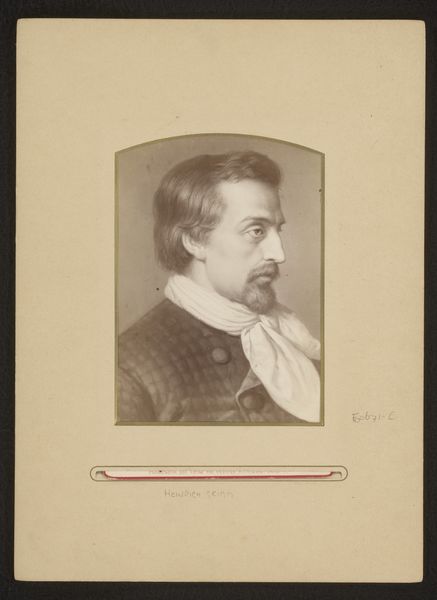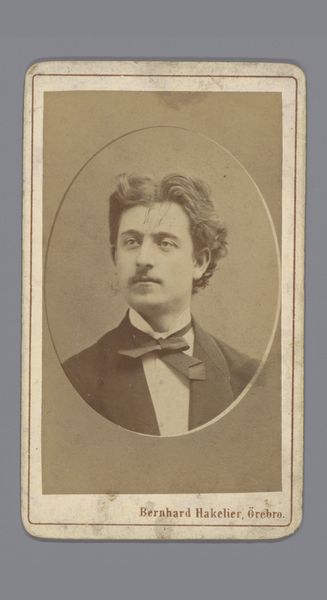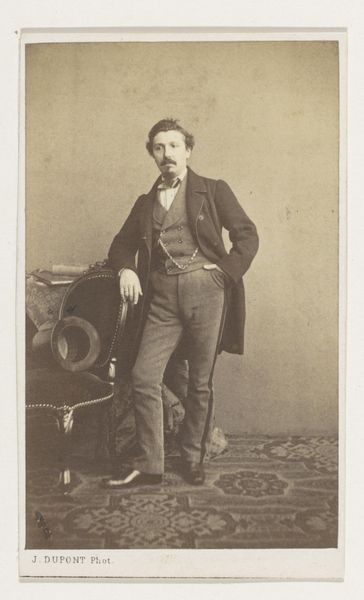![[Unknown Subject] by Saint-Edmé](/_next/image?url=https%3A%2F%2Fd2w8kbdekdi1gv.cloudfront.net%2FeyJidWNrZXQiOiAiYXJ0ZXJhLWltYWdlcy1idWNrZXQiLCAia2V5IjogImFydHdvcmtzL2FlYTBkNzFiLTExNjktNGZjMy1hNDczLWEwYzcxOWQ0NzJlMy9hZWEwZDcxYi0xMTY5LTRmYzMtYTQ3My1hMGM3MTlkNDcyZTNfZnVsbC5qcGciLCAiZWRpdHMiOiB7InJlc2l6ZSI6IHsid2lkdGgiOiAxOTIwLCAiaGVpZ2h0IjogMTkyMCwgImZpdCI6ICJpbnNpZGUifX19&w=3840&q=75)
Dimensions: Approx. 10.2 x 6.3 cm (4 x 2 1/2 in.)
Copyright: Public Domain
Editor: Here we have a photograph from the 1860s by Saint-Edme, currently housed in the Met. The romantic feel and sepia tones give it a wistful, almost melancholy air. What historical factors were at play when this work was made? Curator: The carte-de-visite, like this one, exploded in popularity during the 1860s. They became these accessible, affordable objects. Consider how photography was changing from an elite practice to a mass medium. How does this shift impact the status of portraiture, previously reserved for the wealthy? Editor: I never thought about it that way, so having your portrait taken was suddenly accessible. How did the upper class respond? Curator: Good question. Suddenly everyone can have a portrait! The traditional art world and aristocratic circles wrestled with this new form. Photography was seen by some as a challenge to painting’s status as the premier representational art. Consider the social anxiety embedded in this seemingly simple image. Does knowing this new socio-political context change the way you see this picture? Editor: Definitely. The photograph, which looked rather melancholy now seems self-assertive, a product of cultural democratization! Photography changed everything for not just the rich, but average people like the sitter and me, too. Curator: Exactly. Looking at the public role of art reveals its layered meanings. Editor: I never would have reached that conclusion without considering photography's context during the 1860s. It is fascinating!
Comments
No comments
Be the first to comment and join the conversation on the ultimate creative platform.

